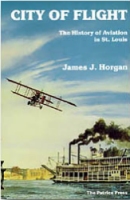


-1983 |
 |
 |
 |
About 1918 |
Early Birds of Aviation 1959 |
Early Birds of Aviation 1970 |
One of the company's more permanent and more successful designers was George A. Page, Jr., who in 1943 became director of engineering for the entire airplane division of the Curtiss-Wright Corporation. From his headquarters in St. Louis he was credited with designing some sixty models for the company. Perhaps his most celebrated achievement was the C-46 "Commando," the cargo-carrying bulwark of the war effort. |
|
January, 1960, Number 62 |
|
You will find the story of the meeting by clicking on: George Page |
|
When Curtiss established a branch in Garden City, L.I., George began his34-year career with that company, assisting during World War I with the design of the MF flying boats and the H-A, the Navy's first seaplane fighter, named the "Dunkirk." After the war he helped with the conversion of the H-A to a mailplane for the Post Office Department. He also helped the Curtiss Racers, winner of the Pulitzer Races for 1921, 2, 3, and 5; and of the Schneider Races for 1923 and 1925. During the post war slump, George went to Florida, dividing his time between house building and flying an H-16 Navy Patrol Boat, which was converted for carrying 11 passengers. During the winter season he flew this between Florida and the Bahamas and Cuba, and then north to fly over the Hudson River and New York lakes. George's final story of that interesting decade concerned one of his southern passengers who apparently was trying to smuggle some mysterious white powder into the States after a flight to Cuba. George tossed it overboard. We could use more Georges today to help with the dope problem. January, 1975, Number 81 |
 |
|
|
|
From The Early Birds of Aviation ROSTER, 1996 |

City of Flight : The History of Aviation... The History of Aviation in St. Louis by James J. Horgan The Patrice Press. |

 |